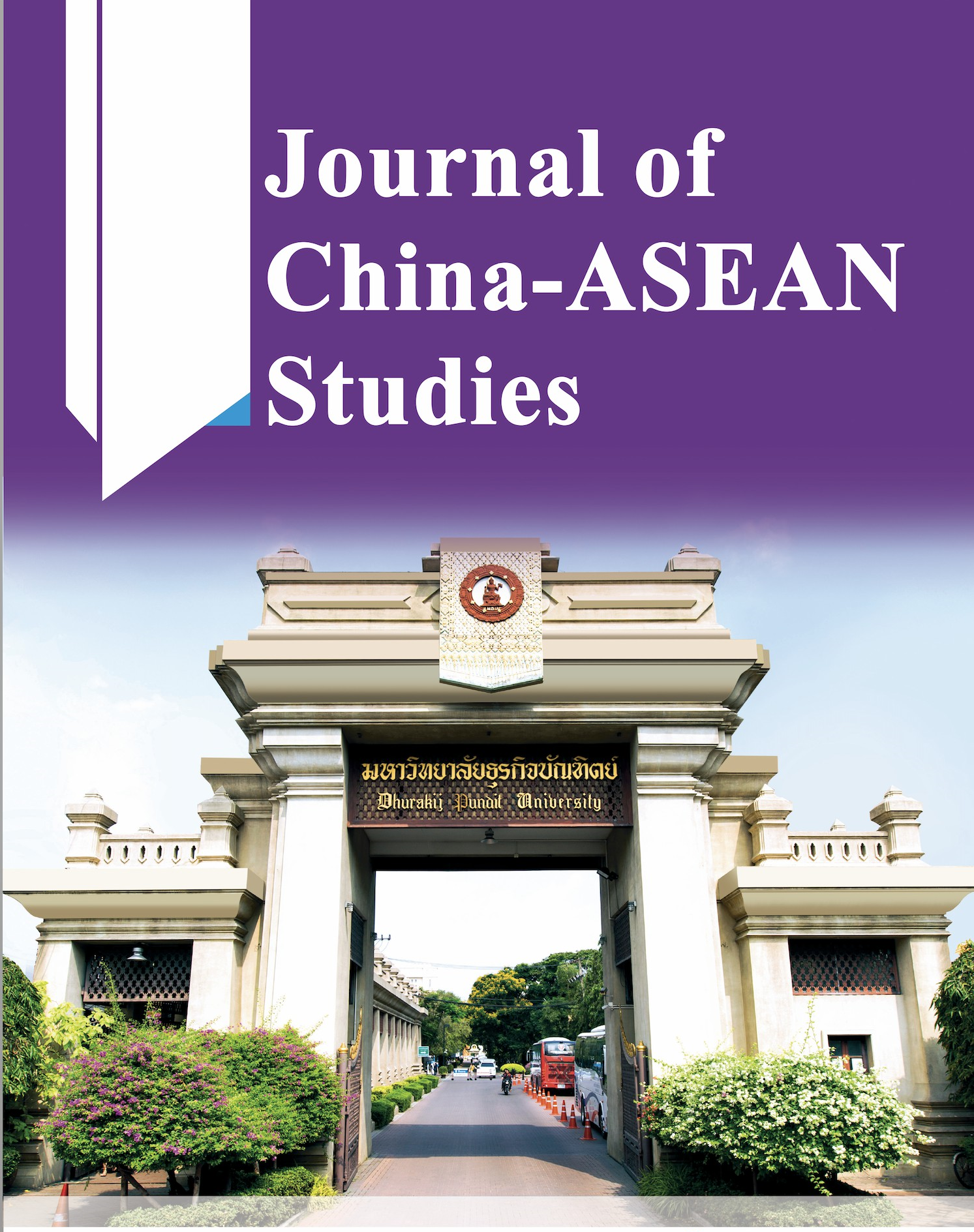A Study on Experiential Marketing of an Underground Tourist Attraction in Bangkok
Keywords:
Experiential Marketing, Underground Tourist Attraction, Covid-19 Pandemic, Customer ExperienceAbstract
Maintaining consumer loyalty/revisit to a company, which leads to revisit or repurchase
purpose, is a critical element in today's highly competitive market climate. To ensure longterm market growth in every industry, businesses must first consider their consumers' desires
and then build unique brands. As consequence, if the tourism sector of the country is
developing very well, it can help and implement other sectors of the country at the same time.
The primary purpose of this research is to study the Experiential Marketing of an underground
tourist attraction in Bangkok, Thailand. The objectives of this study are to analyze the
influence of experiential marketing on emotion, to identify the influence of experiential
quality on experiential satisfaction, to examine the influence of emotion on experiential
satisfaction, and to investigate the influence of experiential satisfaction on revisit intention.
The data collected at a specified time from February 23, 2021, to March 10, 2021. The
questionnaires were hand distributed on weekdays and weekends from 12.00 pm to 6.00 pm at
around Siam Square One, Siam Centre, and Siam Paragon in Bangkok by using five-point
Likert scale survey questionnaires. The questionnaires were distributed until the sample size
was achieved. After the data collecting process, the researchers analyzed all primary data by
utilizing the Statistical program. The descriptive analysis and inferential analysis including
linear regression analysis were used to test all the hypotheses. According to the study’s
findings, experiential marketing (Feel, Sense, Think, Act, Relate) influence is statistically
relevant to emotion. Then, experiential quality and emotion also influence experiential
satisfaction. Moreover, experiential satisfaction positively influences revisit intention. This
study has both time and place limitations which can be difficult to obtain relevant information
and difficult to compile data. The value of this study is to promote marketing strategies and to
pursue the visitors of Sea Life Bangkok Ocean World.
References
Brady, M. K., & Cronin, J. J. (2001). Some new thoughts on conceptualizing perceived servicequality. Journal of Marketing, 65(3), 34-49. https://doi.org/10.1509/jmkg.65.3.34.18334
Chen, C. M., Lee, H. T., Chen, S. H., & Huang, T. H. (2011). Tourist behavioural intentions in relation to service quality and customer satisfaction in Kinmen national park, Taiwan.International Journal of Tourism Research, 13(5), 416-432. https://doi.org/10.1002/jtr.810
Chi, C. G. Q., & Qu, H. (2008). Examining the structural relationship of destination image, tourist satisfaction and destination loyalty: an integrated approach. Tourism Management, 29(4), 624-636. https://doi.org/10.1016/j.tourman.2007.06.007
Cooper, D. R. (2014). Business Research Methods (12th ed). McGraw-Hill/Irwin.
Datta, V. (2017). A Conceptual Study on Experiential Marketing: Impartance, Strategic Issues and Its Impact. International Journal of Research - Granthaalayah, 5(7), 26-30. https://doi.org/10.5281/zenodo.826667
Fornell, C. (1992). A national customer satisfaction barometer: The Swedish experience. Journal of Marketing, 56(1), 6-21. https://doi.org/10.2307/1252129
Hazen, H. (2009). Valuing natural heritage: Park visitors’ values related to world heritage sitesin the USA. Current Issues in Tourism, 12(2), 165-181.https://doi.org/10.1080/13683500802538260
Machleit, K. A., & Mantel, S. P. (2001). Emotional response and shopping satisfaction:Moderating effects of shopper attributions. Journal of Business Research, 54(2), 97-106.https://doi.org/10.1016/S0148-2963(99)00093-4
Oliver, R. L. (1980). A cognitive model of the antecedents and consequences of satisfactiondecisions. Journal of Marketing Research, 17(4), 460-469. https://doi.org/10.2307/3150499
Oliver, R. L. (1997). Satisfaction: A Behavioural Perspective on the Consumer. McGraw Hill.
Pine, B. J. II., & Gilmore, J. H. (1998). Welcome to the experience economy. Harvard Business Review, 76(4), 97-105. http://enlillebid.dk/mmd/wp-content/uploads/2012/03/Welcome-to-the-Experience-Economy-Pine-and-Gilmore.pdf
Ross, G. F. (1993). Ideal and actual images of backpacker visitors to northern Australia.Journal of Travel Research, 32(2), 54-57. https://doi.org/10.1177/004728759303200208
Schmitt, B. (1999a). Experiential marketing. Journal of Marketing Management, 15(1-3), 53 67. https://doi.org/10.1362/026725799784870496
Schmitt, B. (1999b). Experiential Marketing: How to Get Customers to Sense, Feel, Think, Act, and Relate to Your Company and Brands. Free Press.
Sirakaya, E., Petrick, J., & Choi, H. S. (2004). The role of mood on tourism product evaluations. Annals of Tourism Research, Elsevier, 31(3), 517-539.https://doi.org/10.1016/j.annals.2004.01.009
Tsaur, S. H., Chiu, Y. T., & Wang, C. H. (2006). The visitors behavioral consequences ofexperiential marketing: an empirical study on Taipei Zoo. Journal of Travel & Tourism Marketing, 21(1), 47-64. https://doi.org/10.1016/j.annals.2004.01.009
Zikmund, W. G. (2003). Business Research Methods (7th ed.)Thompson Southwestern






